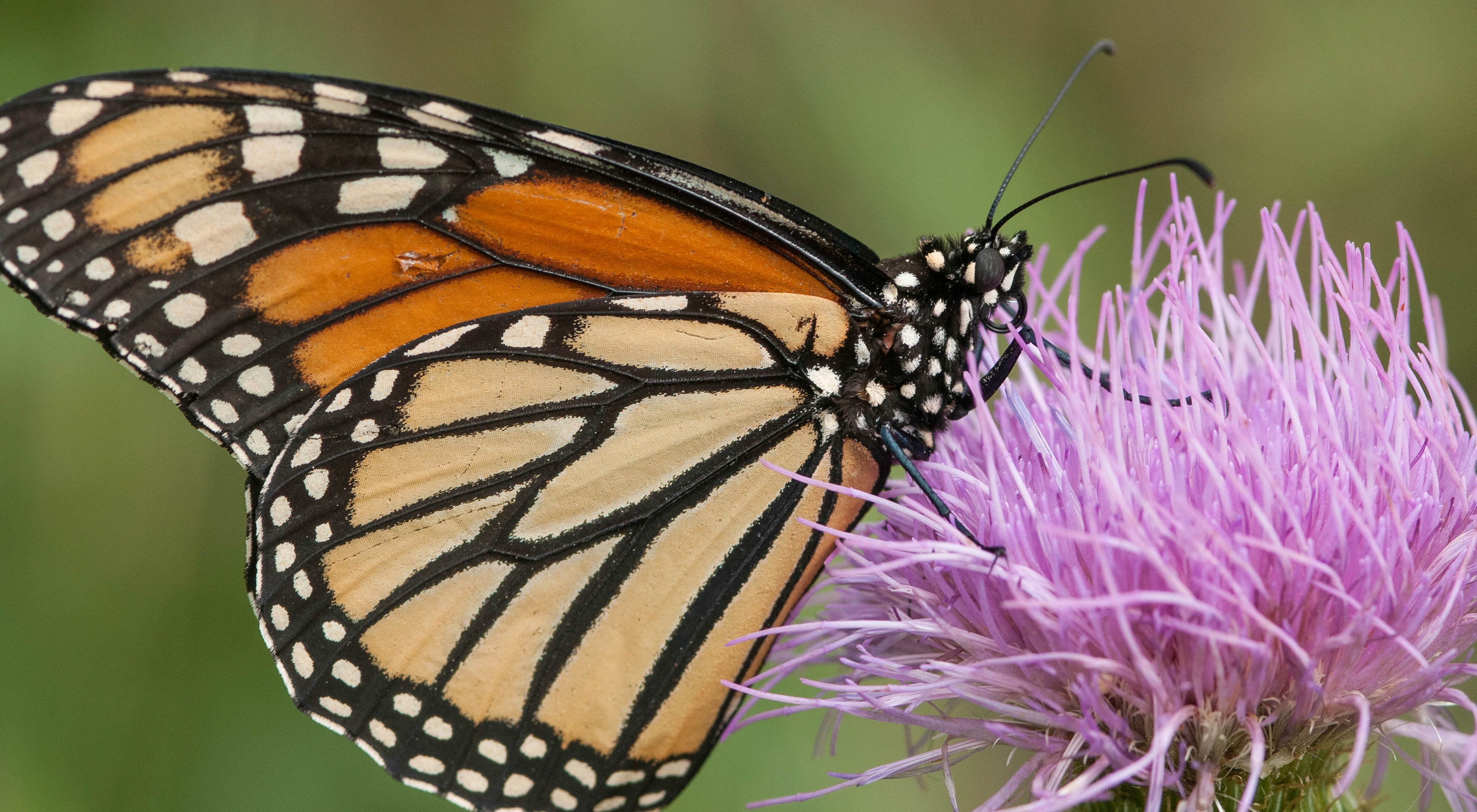Planting for Pollinators
Implementing diverse strategies at its nature preserves will result in more pollinator habitat throughout the Commonwealth.
Transferring pollen to fertilize trees, vegetables and fruits is an important job. The work is carried out by pollinators such as butterflies, moths and bees with impressive efficiency, making them a key part of the worldwide food supply.

Pollinators In Jeopardy
Pollinator species move pollen from one flower to another, thereby fertilizing plants and allowing them to reproduce. According to the Maryland-based Native Pollinators in Agriculture Project, approximately 30 percent of food and fiber crops grown on the planet—roughly one out of every four mouthfuls of food and drink we consume—depend on pollinators for reproduction.
However, pollinators are declining worldwide. This is due to the same environmental challenges affecting other species, including the loss or degradation of habitat, the use of pesticides and other pollution, and a changing climate.

First Responder for Nature
The Nature Conservancy is doing its part to respond to this crisis. In Kentucky, this plays out at large and small-scale projects that will collectively benefit pollinator species. Most recently, we planted a wildflower mix at our Sally Brown Nature Preserve. This adds to our existing plantings at the Mantle Rock and Dupree nature preserves.
“We planted wildflowers on four acres at our Mantle Rock Nature Preserve with the specific goal of attracting pollinators, especially monarch butterflies,” says Chris Minor, TNC’s director of land management. The restored prairie is located near parking areas at Dupree, Sally Brown and Mantle Rock nature preserves to engage visitors in this important issue.
On a larger scale, TNC manages larger prairie habitats totaling around 300 acres at the Dupree, Pine Creek Barrens, Mantle Rock, Sally Brown and Eastview Barrens nature preserves. These areas are beneficial to pollinators as well as other grassland species of birds and small mammals. Using periodic controlled burns on these areas is the primary management strategy. Controlled burns mimic historic disturbances required for healthy prairie and grassland habitats favored by pollinator species. In 2018, TNC hosted a Green River Pollinator Summit in 2018 to engage partners throughout the watershed around this important topic.
TNC also created a 16-acre pollinator habitat on part of a conservation easement held on a local farm. The project was made possible thanks to support from the National Fish and Wildlife Foundation and the U.S. Fish and Wildlife Service.
“We hope that planting pollinator gardens, restoring native prairies and educating the public can lead to positive results,” adds Minor. “This needs to be addressed to ensure the sustainability of food production systems and the health of the environment in Kentucky and around the world.”
Minor adds, "Small, backyard sized, pollinator plants are great for observation and educational purposes, but the change must come at a larger scale focusing on protecting and restoring native grasslands across the Commonwealth to benefit the whole suit of declining grasslands species."
Stand Up For Nature
Support our work to protect nature in Kentucky.
